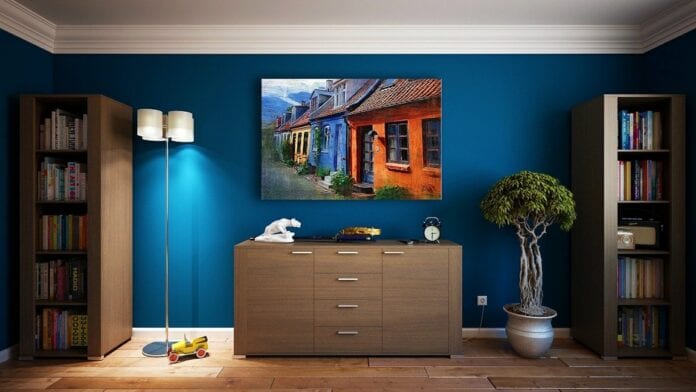The Chinese term Feng Shui, means ‘wind and water’ which, in the culture of the Asian country, means health, peace and serenity. This style of furnishing, suitable for both interiors and exteriors, is based on the use of space and the choice of furniture to create harmony throughout the home. Feng Shui and bio-architecture are two different disciplines but similar in their objective: to create environments for the well-being of man and his surroundings.
Article summary
- What is Feng Shui
- A Feng Shui house
- Every room has the right furniture
- Rules for perfect Feng Shui
What is Feng Shui?
According to the principles of Feng Shui, magnetic and energy fields must be taken into account in order to furnish a house correctly. Few people know how to create rooms that are welcoming and that can transmit tranquillity to those who live in them . Every arrangement of furniture, every choice of colour in a room, if done with awareness, can be a valuable source of energy for those who spend time there. For this reason, even offices and not only homes can follow the rules of Feng Shui.
A Feng Shui home
It is about creating a pleasant and harmonious home environment that, for about 10 years, interior designers and architects have been trying to recreate with the use of lighting, furniture and through the presence of plants. In every home there are energetic forces that interact with the people who live there but risk being obstructed by incorrectly positioned furniture or walls that prevent them from flowing. These are small precautions to follow in furnishing to be able to adhere to this style without necessarily being totally involved or influenced by it.
The orientation of the rooms, whether south or north, can affect sleep. The choice of bedroom colour can change the way you sleep and rest, relaxing or agitating depending on the colour chosen. Mirrors should not be placed in the bedroom. Keeping things tidy without leaving them in a haphazard manner is always part of Feng Shui, such as closing the rubbish or keeping the toilet seat closed in the bathroom to prevent negative forces from entering our daily lives. Keep the entrance hall tidy, which is the main room into which we bring external energies. You don’t need to change your house to adapt it in Feng Shui style and recover your energy, just a few things can have a positive effect on your home environment.
Each room has the right orientation
In order to follow the energies of the house and make the best use of each room to create a pleasant and comfortable environment, according to Feng Shui we should follow the orientation of the cardinal points. The entrance of the house should be positioned on the north side, while on the south side all the rooms where people have relationships will go. The unique aim in choosing a house in perfect Feng Shui style is to achieve the balance that western architecture has managed to find over time through symmetry, while eastern architecture through the dynamism of contrasting forces between which the right balance must be found.
Living room
In order to convey a greater sense of security and cosiness, as far as the positioning of the sofa in the living room is concerned, it is preferable to keep it away from draughts, doors and windows but against a wall. Do not obstruct the entry of light with too heavy fabrics and colourful materials. Brightness stimulates reflection and the generation of positive energies. Avoid corners of the room, which according to Feng Shui are accumulators of negative energies, being left without light or personalisation. Placing even just a candle or a green plant can improve the flow of energy. For the choice of colour, the ideal ones are blue, green, pink and fresh, light, pastel shades that relax the mind. Finally, combine this style with a good carpet (link article) that gives elegance and personality to the room to get the right energy and at the same time enjoy relaxing.
Bedroom
To regain balance in the bedroom, it is first of all recommended to remove all superfluous objects that can distract from rest. Even a simple shelf above the bed can disturb your sleep as your energy will be focused on something unstable above your head.
The best orientation for bedrooms is on the south side of the house. Away from the front door and preferably not on the street. The position of the bed is recommended across with the head facing east or in the corner opposite the entrance; it is important that the feet of the bed never point directly at the room door. The headboard should always be on a wall with no openings, and mirrors should be avoided as they stimulate energy and can prevent a relaxed sleep. Good natural lighting, Himalayan salt lamps and scented candles promote relaxation. As for materials, it is better to avoid plastics and prefer wood, wicker or rattan.
Colours also play a fundamental role in a person’s energy factor. Warm colours such as red or orange are preferable for rooms facing south, while cold colours such as blue or light blue are preferred for rooms facing north, and green for rooms facing east
Kitchen
It should be cosy and tidy. It is a good idea to choose not to turn your back to the door while cooking, to promote tranquillity and safety, considering that you use delicate tools such as cookers and knives. Also, always keep the kitchen clean and tidy. If the size of the room allows it, it is better to choose furniture and tables with rounded shapes without edges.
Bathroom
The bathroom does not need any special exposure according to Feng Shui principles, but it is very important that it is not joined or communicating with the kitchen. Try to have a window with air and light from outside to ensure less energy consumption of artificial light. In addition, a natural exchange of air gives a sense of peace to enjoy the daily routine and build up the right energy.
Garden
A good Feng Shui technique is to have a well-tended vegetable and flower garden. Very tidy and the presence of plants that do not lose too many leaves serves to avoid a sense of unkempt or abandoned. Anything that is not neat and tidy moves away from the concept of energy and risks attracting negative energy. Taking care of your green space is a beneficial therapy that restores your mind and soul and centres your balance, thus favouring meditation like the Zen garden.

Rules for perfect Feng Shui
- Order: before thinking of redesigning a house in Feng Shui style, it is a good idea to start by getting rid of the superfluous, anything that is not useful or not used hinders positive energies and risks having a negative effect on the individual’s wellbeing. So remove what is not needed and keep only what is right and useful. This is already a fundamental step towards welcoming this new style into your home.
- Colours: never a random choice, every room requires a precise study of colours in line with its function. Red for the living room facilitates conversation, as does orange. For sleeping it is good to choose shades of green and blue to promote a good night’s sleep. For the kitchen, yellow is an appetite stimulator and gives the body the right boost right from breakfast.
- Furniture: the right positioning favours a sensation of pleasure for those who live in the room, stimulates them to stay there and is energising. It is also a pleasure for the guest.
- Mirrors: Mirrors hamper energy and are therefore not recommended by Feng Shui in bedrooms.
- Windows: large and without heavy or dark curtains that block natural light. If the room faces the street, neutral and light colours are recommended to block visibility without losing solar energy
- Materials: all absolutely natural. Wood for floors, fixtures and doors recreates visual continuity and promotes a warmer environment than plastics and metals.
- Stairs and lifts: where possible, avoid stairs that are too steep and choose materials such as wood or stone.










